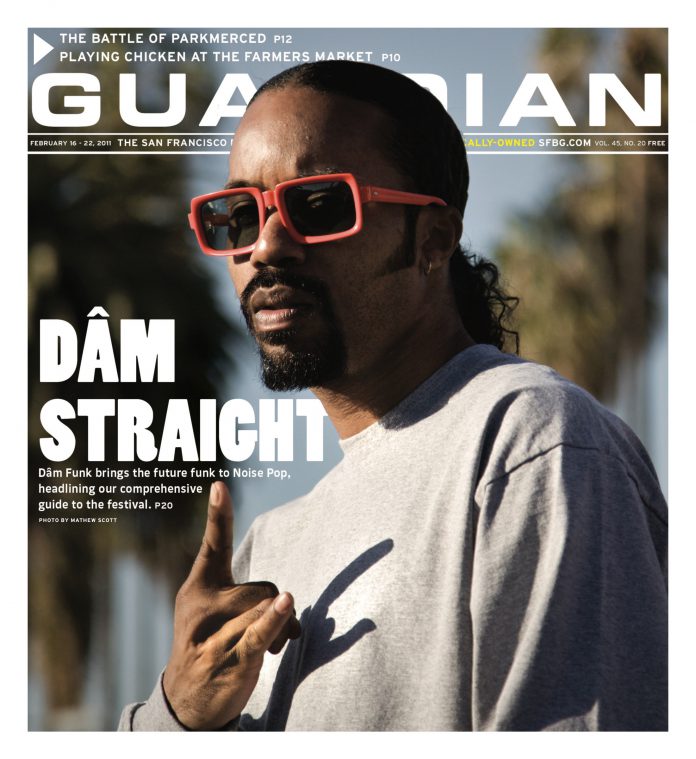RARE SILENT FILM In the 1920s — avant-garde heyday for so many forms of media — ascendant youth culture, “machine age” fetishism, the off-leash romping of bob-haired women, and myriad other factors induced fierce resistance to much now considered of crucial historical and artistic import.
Not to say all this contested art was necessarily good. But much was arguably hated beyond reason. A major case in point plays in Feb. 24 as part of the Pacific Film Archive’s “Cinema Across Media: The 1920s” series. Marcel L’Herbier’s 1924 L’Inhumaine, “a fairy story of modern decorative art,” is a remarkable time capsule of avant-garde trends at their temporal and geographic peak — even if Paris then wasn’t having it.
These were heady times. Privileged intellectual L’Herbier was a heady guy, missing World War I combat service because an angry lover shot off his finger. Attracted to film’s possibilities after mulling career paths from composing to diplomacy, he began directing in 1918. Some soon hailed him as France’s greatest contributor to the medium. Cinema being bandied about then as the ultimate art form combining all before it, such praise was bound to induce hubristic abandon.
L’Herbier’s taste for rarefied experimentation was shared by close friend Georgette Leblanc, an operatic soprano famed for her Carmen and for originating other musical and acting roles. She was long-term muse to Symbolist playwright Maurice Maeterlinck, the millennial stage’s leading innovator. By 1924 that relationship was over, as was her singing career. Not one to be left behind, Leblanc proposed bankrolling a film that she would star in, directed by L’Herbier.
L’Herbier was amenable. He’d started his own production company to avoid the financial problems of prior lofty projects, but only sank deeper in hock. L’Inhumaine was to be a cinematic summit of prominent avant-gardists, its cubist sets alone the work of four designers including painter Fernand Léger and architect Robert Mallet-Stevens. A key sequence at the Théatre des Champs-Elysées called on all Leblanc and L’Herbier’s fashionable connections to impersonate some 2,000 concert-goers whipped into a near riot by the heroine’s infamy and artistry.
Unfortunately, actual public response to their end-product was equally rowdy. Critics heaped scorn; box office was catastrophic; and Leblanc did not deign to grace the silver screen again. It is easy to view L’Inhumaine as her fault: a teetering monument to an Olympian ego.
She plays Claire Lescot, “famous singer, bizarre woman,” who reigns over a salon of great minds and power-mongers enslaved by the fickle attentions that have branded her “inhuman.” When a young engineer (Jaque Catelain) announces he’ll kill himself if she doesn’t give him some sugah, she harrumphs “If you destroy your life so easily, it can’t be worth much.” He promptly plunges a race car off a cliff.
Squat, heavy in war paint and emotional lifting, 50-year-old Leblanc is clearly the most fascinating woman in the world here by write-in vote of one. L’Inhumaine‘s ungainly mix of vanity showcase, modern art trappings, and sci-fi eventually sees our songbird — not silent cinema’s most vivid profession — conquer tout le monde via a radio-television transmission. Which strangely also allows her to see les misérables briefly elevated by her art around the globe. When a jealous rajah poisons her, her “modern magician” scientist lover allows conquering Death itself in a cacophony of machinery and montage.
L’Inhumaine reflects its moment as much as the next year’s Battleship Potemkin (1925). That it was received more like 1923’s Salome — the infamous Rudolf Valentino-funded Art Nouveau version of Oscar Wilde’s play, which for reasons both credible and malicious was branded a “riot” of homosexual aesthetics — laid in the extreme disconnect between cutting-edge techniques and woozily old-hat theatrical content. There’s no denying the film is whopping camp, albeit camp curated (as L’Herbier intended) to complement the hugely influential International Exhibition of Modern Industrial and Decorative Arts opening in Paris in 1925.
This failure must have been tough, but the director persevered. His 1928 Zola update L’Argent (recently revived by the San Francisco Silent Festival) integrated modernist design and conventional storytelling far more successfully. While his sound-era films were considered less innovative, he remained a significant industry force, moving into producing cultural programs for TV.
When L’Herbier died in 1979, even L’Inhumaine had been partly rehabilitated, its ultramodernism treated (as is so often the case) more kindly in retrospect. Fifty years had transformed La Lescot’s grandiosity from ridiculous affectation to charming folly.
L’INHUMAINE
Feb. 24, 7 p.m., $6.50–$9.50
Pacific Film Archive
2575 Bancroft, Berk.
(510) 642-5249

